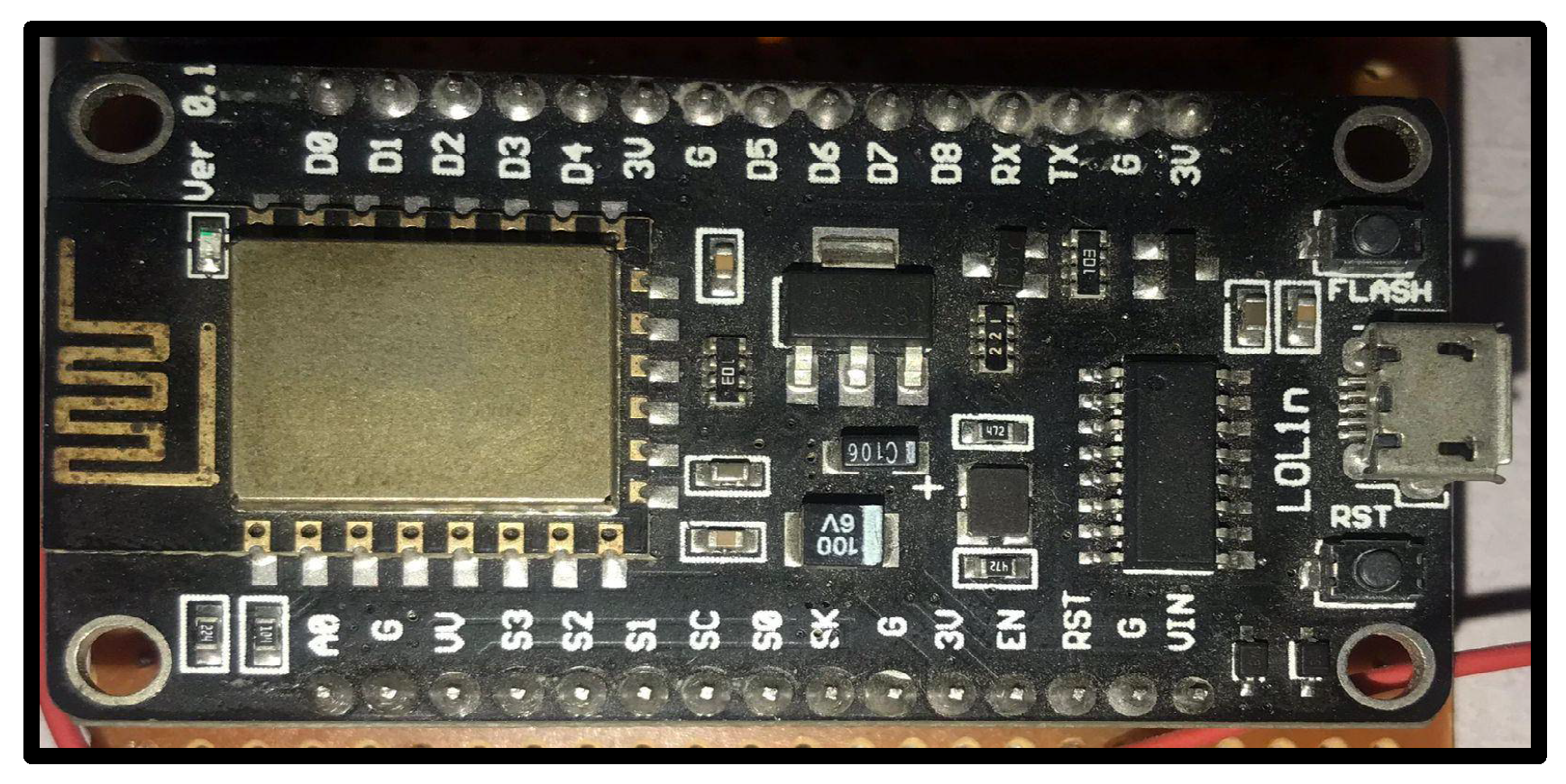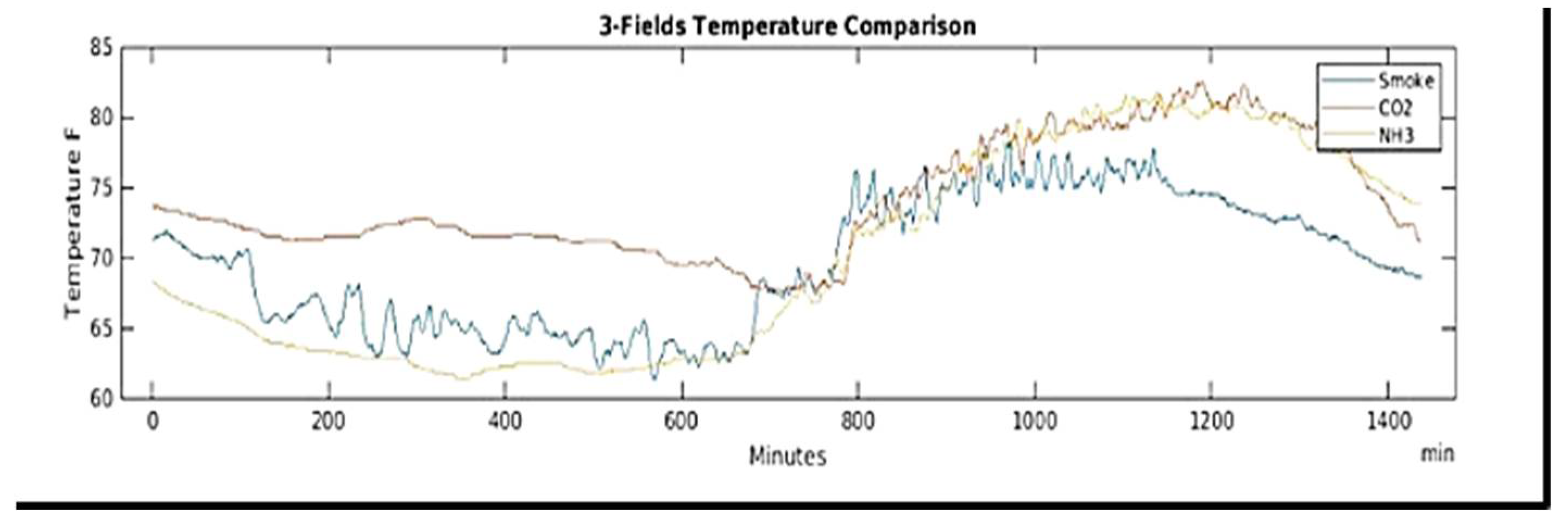Air-MIT: Air Quality Monitoring Using Internet of Things †
Abstract
:1. Introduction
2. System Model
2.1. Hardware Components
2.2. Software Components
3. System Design
4. Results and Discussion
5. Conclusions
Author Contributions
Funding
Institutional Review Board Statement
Informed Consent Statement
Data Availability Statement
Acknowledgments
Conflicts of Interest
References
- Nunez, C. Carbon Dioxide Levels Are at a Record High. Here’s What You Need to Know. Available online: https://www.nationalgeographic.com/environment/article/greenhouse-gases (accessed on 1 March 2022).
- Adeuti, B.R. Analysis of Environmental Pollution in Developing Countries. Am. Sci. Res. J. Eng. Technol. Sci. 2020, 65, 39–48. [Google Scholar]
- Maurya, A.; Chinchane, A.; Sumant, O. Air Quality Monitoring Market by Product Type (Indoor Monitor and Outdoor Monitor), Pollutant (Chemical, Biological, and Physical) and End User (Government & Academic, Oil & Gas, Power Plants, Commercial & Residential, and Others): Global Opportunity Analysis and Industry Forecast, 2021–2030; Report on Air Quality Monitoring Market, Allied Market Research: Portland, OR, USA, 2022. [Google Scholar]
- Aarthi; Kapoor, K.; Musfik, M.; Sharma, R. Air sound monitoring system using IoT. IRJET 2018, 5, 1659–1664. [Google Scholar]
- Pololu Robotics and Electronics. Available online: https://www.pololu.com/ (accessed on 1 March 2022).
- MQ-4 Sensors Datasheet. Available online: https://www.sparkfun.com/datasheets/Sensors/Biometric/MQ-4.pdf (accessed on 1 March 2022).
- How MQ2 Gas/Smoke Sensor Works? & Interface It with Arduino. Available online: https://lastminuteengineers.com/mq2-gas-senser-arduino-tutorial/ (accessed on 1 March 2022).
- MQ-135-Gas Sensor for Air Quality. Available online: https://components101.com/sensors/mq135-gas-sensor-for-air-quality (accessed on 1 March 2022).
- Nayyar, A.; Puri, V.; Le, D.-N. A Comprehensive Review of Semiconductor-Type Gas Sensors for Environmental Monitoring. Rev. Comput. Eng. Res. 2016, 3, 55–64. [Google Scholar] [CrossRef]
- Using the ADS1115: A Precision 16 Bit ADC with Amazing Accuracy. Instantly Improve Your Analog Measurements with High Resolution Capability. Available online: https://www.best-microcontroller-projects.com/ads1115.html (accessed on 1 March 2022).
- Mohamed, F.; Ali, A.D. Integrated Development Environment “IDE” For Arduino. Available online: https://www.researchgate.net/publication/328615543_Integrated_Development_Environment_IDE_For_Arduino (accessed on 1 March 2022).
- Parihar, Y.S. Internet of things and NodeMCU a review of NodeMCU ESP8266 in IoT products. JETIR 2019, 6, 1085–1088. [Google Scholar]
- Acharyya, S.; Hazra, S.; Pal, A.; Sengupta, N. Indoor Air Quality Management Using Raspberry Pi And Graphlab. Int. J. Res. Eng. Technol. 2017, 6, 29–36. [Google Scholar] [CrossRef]





Publisher’s Note: MDPI stays neutral with regard to jurisdictional claims in published maps and institutional affiliations. |
© 2022 by the authors. Licensee MDPI, Basel, Switzerland. This article is an open access article distributed under the terms and conditions of the Creative Commons Attribution (CC BY) license (https://creativecommons.org/licenses/by/4.0/).
Share and Cite
Messan, S.; Shahud, A.; Anis, A.; Kalam, R.; Ali, S.; Aslam, M.I. Air-MIT: Air Quality Monitoring Using Internet of Things. Eng. Proc. 2022, 20, 45. https://doi.org/10.3390/engproc2022020045
Messan S, Shahud A, Anis A, Kalam R, Ali S, Aslam MI. Air-MIT: Air Quality Monitoring Using Internet of Things. Engineering Proceedings. 2022; 20(1):45. https://doi.org/10.3390/engproc2022020045
Chicago/Turabian StyleMessan, Syeda, Asra Shahud, Amna Anis, Roma Kalam, Sundus Ali, and Muhammad Imran Aslam. 2022. "Air-MIT: Air Quality Monitoring Using Internet of Things" Engineering Proceedings 20, no. 1: 45. https://doi.org/10.3390/engproc2022020045
APA StyleMessan, S., Shahud, A., Anis, A., Kalam, R., Ali, S., & Aslam, M. I. (2022). Air-MIT: Air Quality Monitoring Using Internet of Things. Engineering Proceedings, 20(1), 45. https://doi.org/10.3390/engproc2022020045





